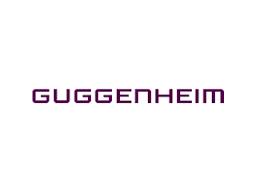This is the second piece in a series in a two-part series. The previous piece looked at Invesco's Guggenheim acquisition and the $1.2bn price tag. This piece looks at why the acquisition was made.
ETFs are a relatively new industry, saddled between financial services and technology. Full-scale buyouts of ETF issuers are rare and when they occur the details are almost never made public.
Which makes Invesco's purchase of Guggenheim for $1.2 billion, offering a rare case of an ETF issuer being bought publicly by another issuer, especially significant.
In analysing this deal and its price tag, obvious questions have to be answered: why did Invesco want Guggenheim in the first place? And why were they willing to pay that much for it?
A view to an acquisition
At first blush it's not immediately clear why Invesco wanted Guggenheim. In its statements to the press, Invesco said they wanted Guggenheim because its "capabilities" were "complementary" to their own.
This is definitely plausible. There is almost no direct overlap between Invesco and Guggenheim's ETF lineups. And that so few of their products are in direct competition can make merging more efficient as capabilities won't be duplicated.
But this comes with an important qualification: despite the lack of direct overlap, both are smart beta specialists. Both got big by offering differentiated, specialised ETFs at a remove from the plain vanilla variety. For Invesco's PowerShares this was the famous QQQ, the NASDAQ tracker. For Guggenheim, it was RSP, an equal-weighted S&P tracker. PowerShares was one of the first movers in smart beta in 2003. For Guggenheim, its "Pure Style" smart beta line has $4bn in assets, among the largest of any issuer.
So, while they might not be competing product-for-product, they're cuddled up in a similar segment of the market. And that pocket is getting increasingly competitive, which might suggest other considerations may have been at play.
Did the fee war play a part?
According to a presentation that Invesco made to investors, one of the draws in buying Guggenheim was that "The combined business reinforces Invesco's smart beta leadership in the US." In other words, Invesco had its eye on smart beta when it made the purchase.
Why does this matter? Because one of the key developments in smart beta this year has been the smart beta fee war, which can suggest a reason for making the acquisition.
The fee war began in plain vanilla funds, where it quickly generated a vast pile of corpses. But it has since moved on and is now well underway in smart beta.
Here, both Invesco and Guggenheim might be vulnerable to fee pressures as both issuers' AUM is concentrated in their two headline funds. For Invesco, around half its AUM is tied up in QQQ. For Guggenheim, a similar fraction is tied up in RSP.
There are some tentative indications that both issuers are feeling the fee pressure—more obviously Guggenheim. Goldman Sachs listed an equal-weighted S&P tracker at a lower price than Guggenheim in September. Between the time Goldman Sachs filed its prospectus earlier this year and the time of its listing, Guggenheim cut RSP's management fee in half, down to 0.20%.
There is also evidence that Invesco is feeling pressure as well—but in a much more subtle way. Invesco had never really launched any plain vanilla ETFs, despite being one of the oldest index-tracking fund providers. It seems to have thought that the plain vanilla market was crowded and not worth the effort - clearly a smart judgement given its inexorable growth
But last month Invesco listed plain vanilla ETFs at highly competitive prices. Which left many analysts wondering: why now, after all these years?
The timing offers one explanation. That is, with so many other issuers declaring fee war on its home turf in smart beta, Invesco may have thought it should do the same in its competitors' space. Tit for tat, in other words. But this is of course pure speculation by an observer.
What is clear though is that the new contours of the US ETF market are becoming clear. The fee war is almost everywhere including alternative and smart beta products, making profitability increasingly tough. M&A activity helps diversify and brings scale. It also helps build that all-important competitive moat which should, in turn, protect market share. If one follows this logic then perhaps there's no bubble at all in terms of prices paid.





